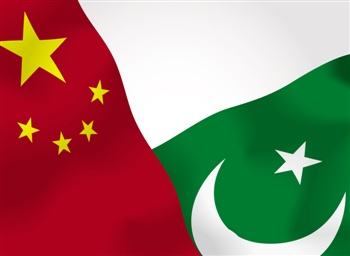Editor’s foreword: CCTV.com has invited foreign experts, business people and students to submit articles or short videos on China's Belt & Road Initiative (B&R), to share opinions on B&R or stories with China. We are featuring a special series on the topic for our readers.
By Brant Johnston, master student of International Security Scholar at Macquarie Univerisity, Australia
Chinese President Xi Jinping’s vision to recreate the ancient Silk Road, which had brought much wealth to China while boosting cross-border trade of Chinese goods, was recognized as a ‘game changer’ for the global economy in its time.
The Silk Road Economic Belt and the creation of the 21st Century Maritime Silk Road through massive investments in infrastructure, trade and securing sea lanes will spread globalization’s outreach to open up new markets for the Chinese economy.
The wealth of all the countries can increase via the Belt & Road Initiative (B&R), which could help millions of families escape impoverished conditions.
Nevertheless, it is not so simple to accomplish. The proposed route travels across dozens of countries, cultures, regions, languages and beliefs. Finding common acceptance among all peoples will prove challenging.
The China-Pakistan Economic Corridor (CPEC) reveals the many challenges the B&R would likely confront. The CPEC is the first major test and should be studied for future success of the entire initiative.

The Chinese Gwadar Port and greater Chinese investment of infrastructure in Pakistan are expected to reap tremendous benefits for both countries but some risks could destablalize it.
The biggest threat comes from several rebel groups, including the Taliban, ISIS and local Balochistan residents. The security situation in Central Asia and area surrounding Pakistan remains fractured and at high risk.
These groups pose a serious threat to security at the port, as well as for Chinese citizens and cargo traveling in the region. The CPEC route also runs through territory India is contesting as its own.
Beijing should learn from the obstacles and use it as a warning sign for future developments.
Fortunately, China and Pakistan already share a close relationship, but success of Gwadar Port and CPEC may not reach its full potential if the Chinese and Pakistani governments cannot limit the impact caused by such aforementioned threats.
A failure of the two governments to address these issues and allow CPEC to be restricted would be a major loss for both nations. Beijing should take alternative approaches to secure CPEC for generations to come in order to realize President Xi’s dream of a modern 21st century Silk/Maritime road.

Brant Johnston, master student of International Security Scholar at Macquarie Univerisity, Australia
(The opinions expressed here do not necessarily reflect the opinions of Panview or CCTV.com)

Panview offers a new window of understanding the world as well as China through the views, opinions, and analysis of experts. We also welcome outside submissions, so feel free to send in your own editorials to "globalopinion@vip.cntv.cn" for consideration.















